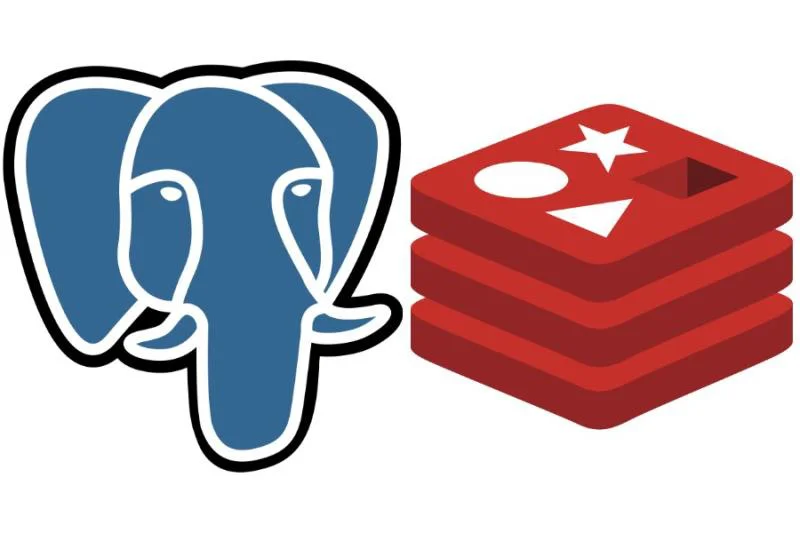Redis is an in-memory key-value store known for its high performance and low latency. It keeps its data in memory, which makes it faster to read and write. It is often used as a caching layer, a message broker, or for real-time data processing. Postgres is a powerful, open-source, SQL-based relational database management system (RDBMS) that can handle complex queries, transactions, and data consistency with ACID properties. The main difference between Redis and Postgres is how they store data (in memory vs on disc), how they organise data (key-value vs relational), and how they are used (caching, real-time processing vs traditional RDBMS).
What is Redis?
Redis, which stands for Remote Dictionary Server, is an open-source key-value store that works in memory and is fast and flexible. It is made to be very fast, have low latency, and be easy to use. It stores most of its data in memory, with disk-based persistence as an option. This makes it faster to read and write data than disk-based databases.
Redis is a key-value store but also works with different data structures, such as strings, hashes, lists, sets, sorted sets, and more. It is flexible and fast and is great for caching, session management, real-time analytics, message queuing, and pub/sub systems.
Redis supports data replication, which allows for some fault tolerance and horizontal scaling. It may also be built as a distributed cache system utilising Redis Cluster, which permits data sharding and automatic failover.
Redis also supports scripting in Lua, which lets developers run their scripts inside the database engine. This improves performance by reducing the number of network round-trips and helps keep complex operations atomic.
Redis is a robust in-memory key-value store known for its speed, flexibility, and ability to scale. This makes it a popular choice for caching, real-time processing, and other uses requiring quick data access.
What is Postgres?
PostgreSQL, or Postgres, is an open-source, powerful, and expandable relational database management system (RDBMS) that focuses on SQL compliance, data integrity, and reliability. It lets you store and alter structured data using tables, relationships, and a robust typing system. This makes it suitable for complex queries and transactions.
Postgres uses the ACID (Atomicity, Consistency, Isolation, Durability) properties to ensure that data is always the same and can handle multiple transactions simultaneously. It has many built-in data types, including text, numbers, date/time, JSON, etc. It also lets users create their own data types and functions.
Postgres’s ability to be expanded is one of its best features. It has features like stored procedures, triggers, and support for different programming languages like Python, Java, and Perl. It also lets you search for full text, supports spatial data through PostGIS, and has a Foreign Data Wrapper (FDW) tool for interacting with data sources from outside the database.
Postgres has robust security features, such as access control based on roles, SSL encryption, and row-level security. It has mechanisms for backup and replication for fault tolerance and high availability, and it can grow vertically by using hardware resources.
In conclusion, Postgres is a reliable, feature-rich, and extendable RDBMS that does well with structured data, complex queries, and transactions. This makes it popular for traditional database applications, web applications, and enterprise systems.
Difference Between Redis and Postgres
Disk-based storage vs in-memory storage, relational vs key-value, and use cases are where Postgres and Redis most diverge. Postgres is a powerful relational database management system (RDBMS) that uses Structured Query Language (SQL). It guarantees data integrity using ACID characteristics by managing structured data, complicated queries, and transactions. In contrast, Redis is a key-value store that operates in memory and is well-known for its speed and low latency; it is typically employed for caching, real-time processing, and messaging.
Data Storage
In contrast to Redis, which saves data mostly in memory but also offers disk-based persistence, Postgres stores data on disk.
Data Structure
Redis is a key-value store that also supports different data structures, while Postgres uses a relational data architecture with tables.
Query Language
Redis is based on a simple command-based language, while Postgres uses the SQL query language for data manipulation.
Consistency
Whereas Postgres is known for its strict adherence to ACID principles, which guarantees data consistency, Redis is known for its speed and ease of use.
Transactions
Redis’ transactional capabilities are more rudimentary than Postgres’, with only the MULTI, EXEC, and WATCH commands available.
Indexing
In contrast to Postgres’s robust indexing capabilities, Redis’s are confined to sorted sets and secondary indexes.
Data Types
Redis offers strings, hashes, lists, sets, and sorted sets, while Postgres includes a wide variety of predefined and user-defined data types.
Extensibility
Redis allows Lua scripting for custom logic, while Postgres supports custom functions, data types, and operators.
Use Cases
Redis is great for caching, real-time processing, and messaging, while Postgres is best for sophisticated queries, transactions, and classic RDBMS applications.
Scaling
Whereas Postgres offers replication for high availability and vertical scalability, Redis offers sharding and replication with Redis Cluster for horizontal scalability.







